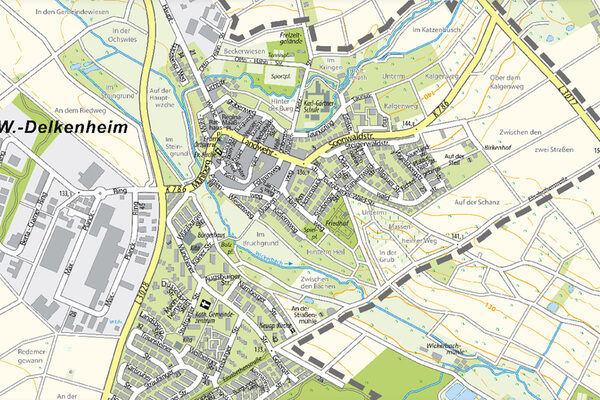The Knights of Delkenheim
Delkenheim is a district with a long and eventful history - from robber baronage to reconstruction after the world wars and incorporation.
Early medieval roots
Delkenheim was first mentioned in 1204 in a document by the knight Godefridus de Delchilnheim. Historically, however, the settlement dates back to the sixth century, when the Franks settled in the region as part of the migration of peoples.
Town charter and knight's castle
On December 4, 1320, King Ludwig der Baier granted Delkenheim town privileges. The center of the town at this time was a knight's castle. This was burnt down by Rheingau mercenaries in 1372. The reason for the raid was probably robber barony, as the knights of Delkenheim were considered the terror of the surrounding area.
The end of the robber barons
With the end of the robber baron era, the quality of life improved. The first schoolmaster was appointed in Delkenheim in 1655. Agriculture and viticulture flourished and livestock farming also increased. The foundation stone for the new vicarage was laid in 1773, followed by the construction of today's Protestant church, the "Ländchesdom", in 1893.
Recounted
- The first census in Delkenheim took place in 1813. It counted 518 inhabitants and 70 schoolchildren.
- An agricultural census followed in 1900: 116 horses, 654 cattle, 406 pigs, 104 goats, 223 geese and 2,118 chickens were kept on the farms.
- In 1900, there were also 6,617 apple trees, 1,078 pear trees, 1,949 plum trees and 43 cherry trees.
The time of the world wars
Delkenheim also experienced hard times. In 1918, the town was occupied by the French. During the Second World War, the church tower was damaged by artillery fire in 1945. On March 28, 1945, American tanks entered the town.
Reconstruction
Reconstruction began after the war. The church was renovated in 1952 and a new bronze bell was installed in 1955. In the following years, important infrastructure projects such as the parish hall, the Karl Gärtner School and the Catholic community center were built.
Modernizations
On January 1, 1977, Delkenheim was incorporated as a district of Wiesbaden as part of the territorial reform. In the following decades, further modernization took place, such as the construction of a bypass and the renovation of the town hall square.
"Delki"
During excavations in 1998, a 1,300-year-old skeleton was discovered in Landwehrstraße. "Delki" is now on display in the local history museum.
Historical highlight
On March 27, 1945, the "Delkenheimer Volkssturm" marched towards Bad Soden - but only made it as far as Wallau. Once there, they treated themselves to a drink in an inn and were only able to return to Delkenheim late in the evening. The next day, shortly after 12 noon, the first American tanks entered the town.
